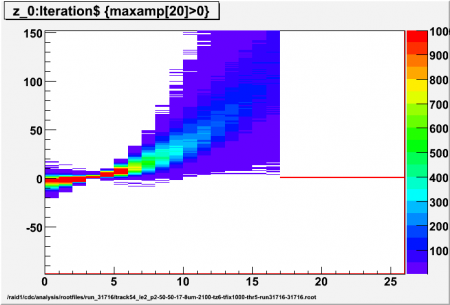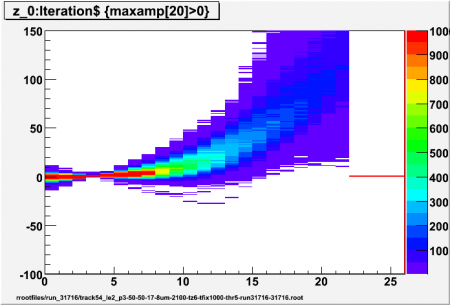CDC prototype more on timing
From GlueXWiki
Revision as of 11:36, 21 October 2011 by Nsjarvis (Talk | contribs) (Created page with "Current analysis code procedure: #Calculate s.d. of pedestal for first 100 samples, 100 events, save for later use (sigma) For each event... #Calculate mean pedestal over 100 sam...")
Current analysis code procedure:
- Calculate s.d. of pedestal for first 100 samples, 100 events, save for later use (sigma)
For each event...
- Calculate mean pedestal over 100 samples ending 10 samples before the trigger time (every 4th of these samples also works)
- Search forward for sample x where adc value > high threshold n1 sigma
- Step back p samples to sample p-x, take adc value of sample p-z to be local pedestal value
- Subtract local pedestal value from a number (10+p) of samples starting at sample x-(p+5) to the LE algo for interpolation
- Search through interpolated samples, start with last sample (highest adc value) search backwards until adc value < low threshold n2 sigma
- Calculate time where interpolated samples cross n2 sigma, and add to time of sample p-x, this is the estimated drift time.
Interpolated adc values Looking at different values for p (local pedestal lead time ahead of first/high threshold crossing) for high threshold of 5 sigma. To obtain sample time from xaxis value, divide by 5 and subtract 4.2.



